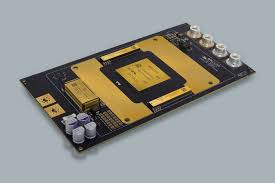PCB Design for Power Management: Key Considerations and Best Practices
Introduction
Power management is a critical aspect of modern electronic design, influencing the performance, efficiency, and reliability of electronic systems. Printed Circuit Board (PCB) design plays a pivotal role in ensuring effective power distribution, minimizing losses, and reducing electromagnetic interference (EMI). This article explores the essential considerations and best practices in PCB design for power management, covering layout techniques, component selection, thermal management, and signal integrity.
1. Importance of PCB Design in Power Management
Power management circuits, such as voltage regulators, DC-DC converters, and power amplifiers, require careful PCB design to achieve optimal performance. Poor PCB layout can lead to issues such as:
- Voltage drops due to high resistance traces.
- Excessive heat generation from inefficient power delivery.
- EMI and noise coupling, affecting signal integrity.
- Poor transient response due to improper decoupling.
A well-designed PCB ensures efficient power delivery, stable operation, and compliance with industry standards.
2. Key Considerations in Power Management PCB Design
2.1 Power Plane and Grounding Strategies
- Dedicated Power Planes: Using solid power planes reduces impedance and minimizes voltage drops. Multi-layer PCBs with separate power and ground planes improve performance.
- Grounding Techniques: A well-designed ground plane minimizes noise and EMI. Star grounding or partitioned ground planes can help isolate sensitive analog and digital circuits.
- Minimizing Ground Loops: Avoid splitting ground planes unnecessarily, as this can create ground loops that introduce noise.
2.2 Trace Width and Current Carrying Capacity
- Current Density: Traces carrying high currents must be wide enough to prevent excessive heating. The IPC-2152 standard provides guidelines for trace width based on current and temperature rise.
- Via Placement: Multiple vias in parallel can reduce resistance and improve current distribution in high-power paths.
2.3 Component Placement and Routing
- Proximity of Power Components: Place power components (e.g., inductors, capacitors, and regulators) close to each other to minimize loop area and reduce parasitic inductance.
- High-Frequency Switching Paths: Keep switching loops (e.g., in buck/boost converters) as short as possible to reduce EMI.
- Thermal Considerations: Position heat-generating components (e.g., MOSFETs, regulators) near cooling features like thermal vias or heatsinks.
2.4 Decoupling and Bulk Capacitors
- Decoupling Capacitors: Place small ceramic capacitors (e.g., 0.1µF) near IC power pins to filter high-frequency noise.
- Bulk Capacitors: Use larger electrolytic or tantalum capacitors to stabilize voltage during transient load changes.
- Low-ESR Capacitors: In switching regulators, low equivalent series resistance (ESR) capacitors improve efficiency and reduce ripple.
2.5 Thermal Management
- Thermal Vias: Use arrays of thermal vias under hot components (e.g., power MOSFETs) to conduct heat to inner layers or the opposite side of the PCB.
- Copper Pour: Increasing copper area around high-power components helps dissipate heat.
- Heatsinks and Fans: For high-power applications, active or passive cooling may be necessary.
2.6 EMI and Noise Reduction
- Shielding: Enclose sensitive circuits with grounded shields to block EMI.
- Proper Filtering: Use ferrite beads and LC filters to suppress high-frequency noise.
- Differential Pair Routing: For high-speed signals, differential routing reduces EMI susceptibility.

3. Best Practices for Power Management PCB Design
3.1 Multi-Layer PCB Stackup
A well-planned stackup improves power integrity and signal quality. A typical 4-layer stackup for power management may include:
- Layer 1 (Top): Signal traces and power components.
- Layer 2 (Ground Plane): Provides a low-impedance return path.
- Layer 3 (Power Plane): Dedicated power distribution.
- Layer 4 (Bottom): Additional signal routing and thermal dissipation.
3.2 Simulation and Verification
- Power Integrity Analysis: Tools like SPICE or Ansys SIwave simulate voltage drop and noise.
- Thermal Simulation: Finite Element Analysis (FEA) tools predict hotspots.
- EMI Simulation: Tools like CST or HyperLynx analyze radiated emissions.
3.3 Design for Manufacturing (DFM)
- Avoid Thin Traces in High-Current Paths: Prevents overheating and manufacturing defects.
- Proper Solder Mask and Silkscreen: Ensures reliable assembly and debugging.
- Test Points: Include test points for voltage and current measurements during validation.
4. Case Study: PCB Design for a Buck Converter
Consider a 12V-to-5V buck converter:
- Component Placement: The inductor, MOSFET, and diode are placed close to minimize loop area.
- Power Traces: Wide traces (≥50 mils) handle high currents.
- Decoupling: A 10µF ceramic capacitor near the input and a 22µF electrolytic capacitor at the output stabilize voltage.
- Thermal Management: Thermal vias under the MOSFET connect to a bottom-side copper pour for heat dissipation.
5. Future Trends in Power Management PCB Design
- Higher Switching Frequencies: GaN and SiC devices enable faster switching, requiring optimized PCB layouts.
- Embedded Power Components: Integrating passive components (e.g., inductors) into the PCB reduces size.
- AI-Driven Optimization: Machine learning tools automate power delivery network (PDN) optimization.
Conclusion
Effective PCB design is crucial for power management systems, impacting efficiency, thermal performance, and EMI compliance. By following best practices in power plane design, component placement, thermal management, and noise reduction, engineers can ensure robust and reliable power delivery. As power electronics evolve, advanced materials and simulation tools will further enhance PCB design methodologies.







